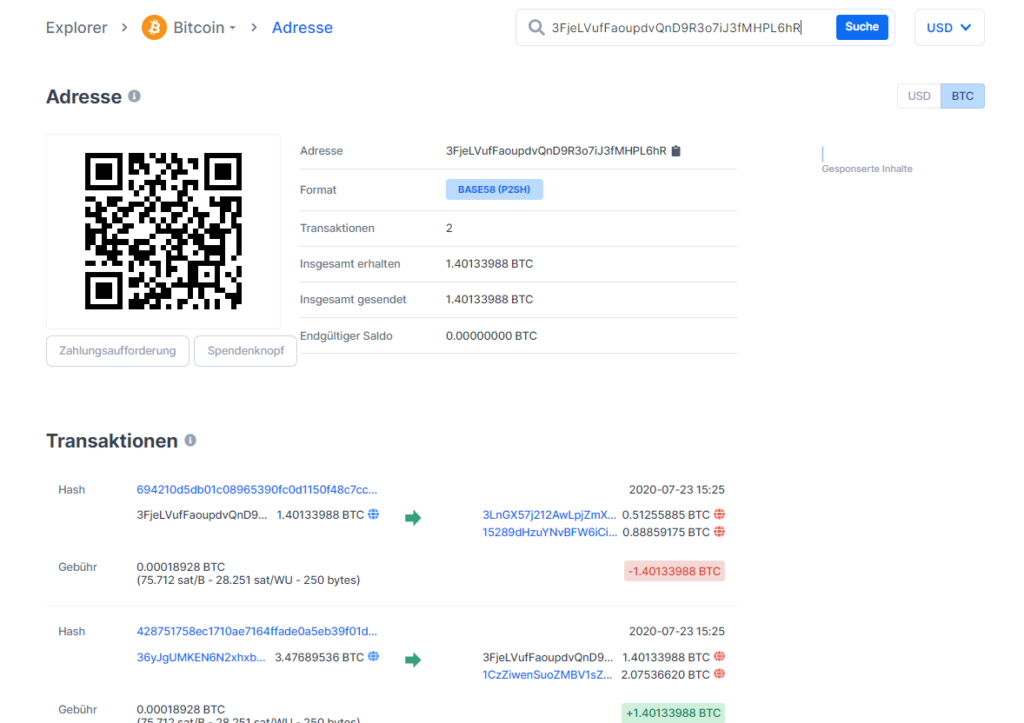In this Blocktrainer 1×1 , we will take a closer look at a so-called blockchain explorer. The "Internet Explorer" programmed by Microsoft, for example, is very well known. This is a computer program that you can use to display websites. Each website has a unique address that can be accessed using Internet Explorer.
You can imagine a blockchain explorer in a similar way. Each transaction and address is unique on the blockchain. This means that these entries can be easily tracked either via software or via blockchain explorers, which leads to a high level of transparency.
One example of a blockchain explorer is Blockchain.com. If you enter transactions, blocks or recipient addresses here, everything can be tracked on the blockchain.
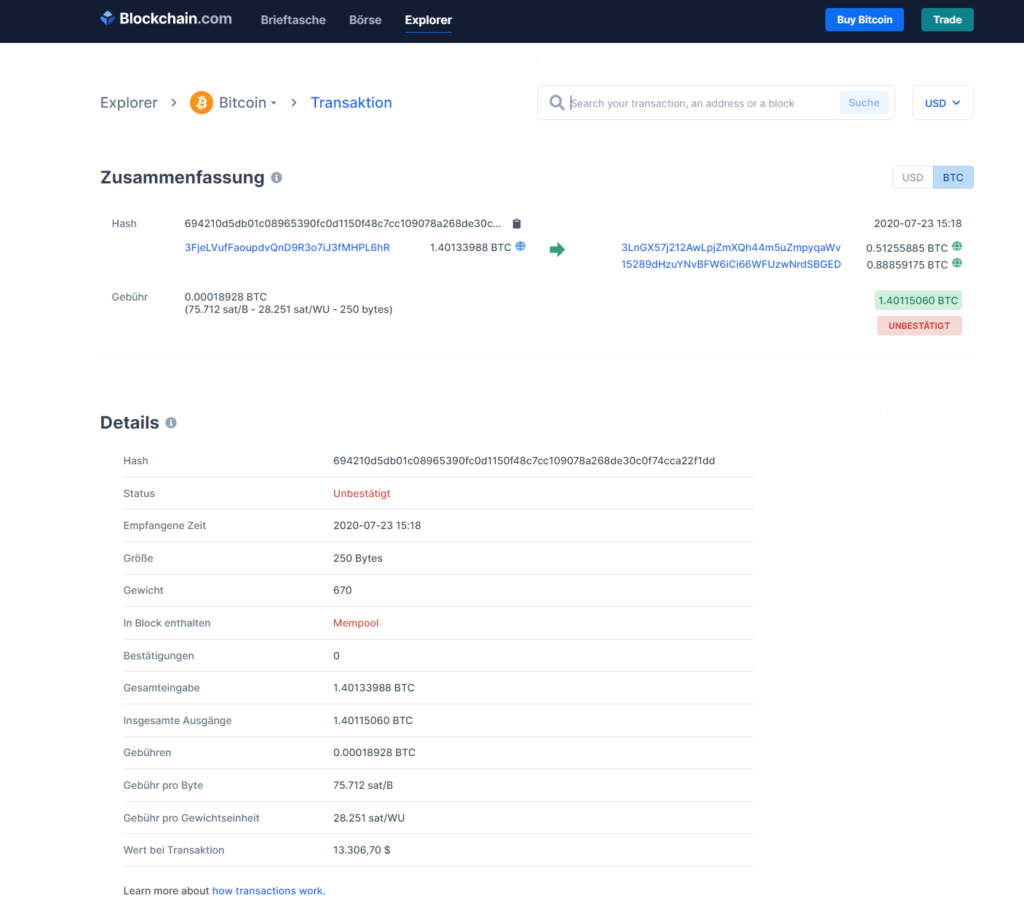
In the case of our example, we have searched for a transaction ID. The browser takes us to the following page, which is divided into four headings: Summary, Details, Inputs and Outputs.

Quelle: https: //www.blockchain.com/btc/tx/694210d5db01c08965390fc0d1150f48c7cc109078a268de30c0f74cca22f1dd
The summary shows you a brief overview of your transaction. You can track the amount of Bitcoin you have sent and the fees you have paid a miner to include your transaction in their block.
In our example, this means: For the transaction ID 69421...22f1dd, a total of 1,401 BTC is sent from the sender address 3FjeL...PL6hR to two recipient addresses. Recipient address 1(3LnGX...yqaWv) receives 0.512 BTC, recipient address 2(15289...SBGED) receives 0.888 BTC. The size of the transaction is 250 bytes.
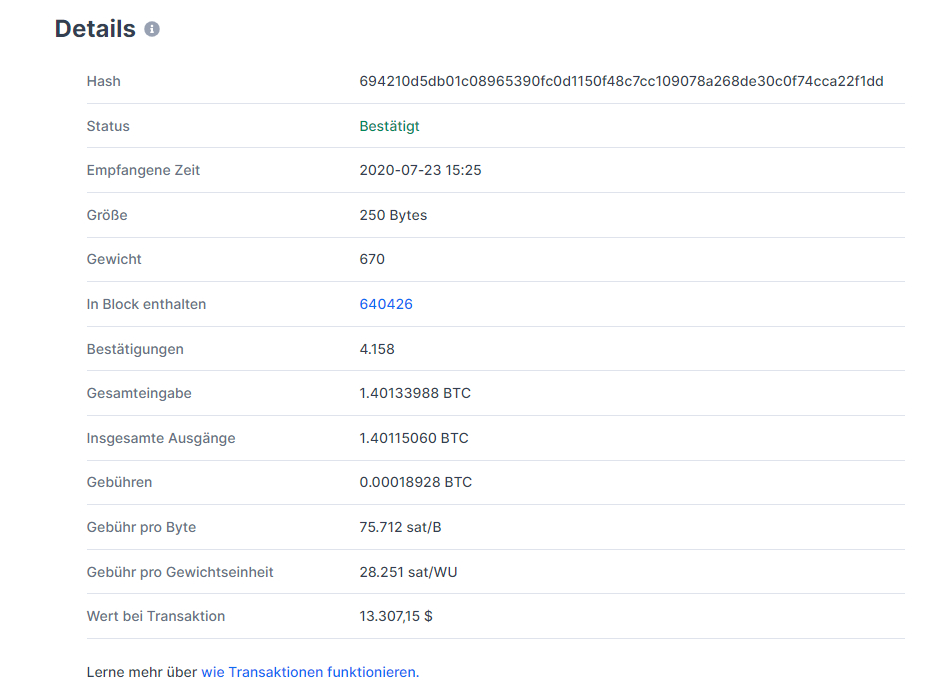
Quelle: https: //www.blockchain.com/btc/tx/694210d5db01c08965390fc0d1150f48c7cc109078a268de30c0f74cca22f1dd
In addition to the hash (transaction ID), Bitcoin amount, transaction size and transaction fees, you will also find information about the status, block height, weight and number of confirmations.
The status tells you whether your transactions have already been successfully integrated into a block, i.e. confirmed, or are still waiting in the so-called 'mempool' (where unconfirmed transactions are collected) to be recorded by a miner (i.e. unconfirmed). Each additional block that builds on this block leads to a further confirmation. In our example, we already have 4158 confirmations.
Since there is a block size limit in a block, we can use the "weight" to make a statement about how large the transaction is in relation to others. This weighting is an important value to ensure that the block size limit of the block is not exceeded.
The block height is displayed in the "Included in block" section. The block height is nothing more than a consecutive numbering starting with the genesis block and tells you in which block your transaction is located.
To search for a block, you can search for the respective block number (also called block height) in the Explorer.
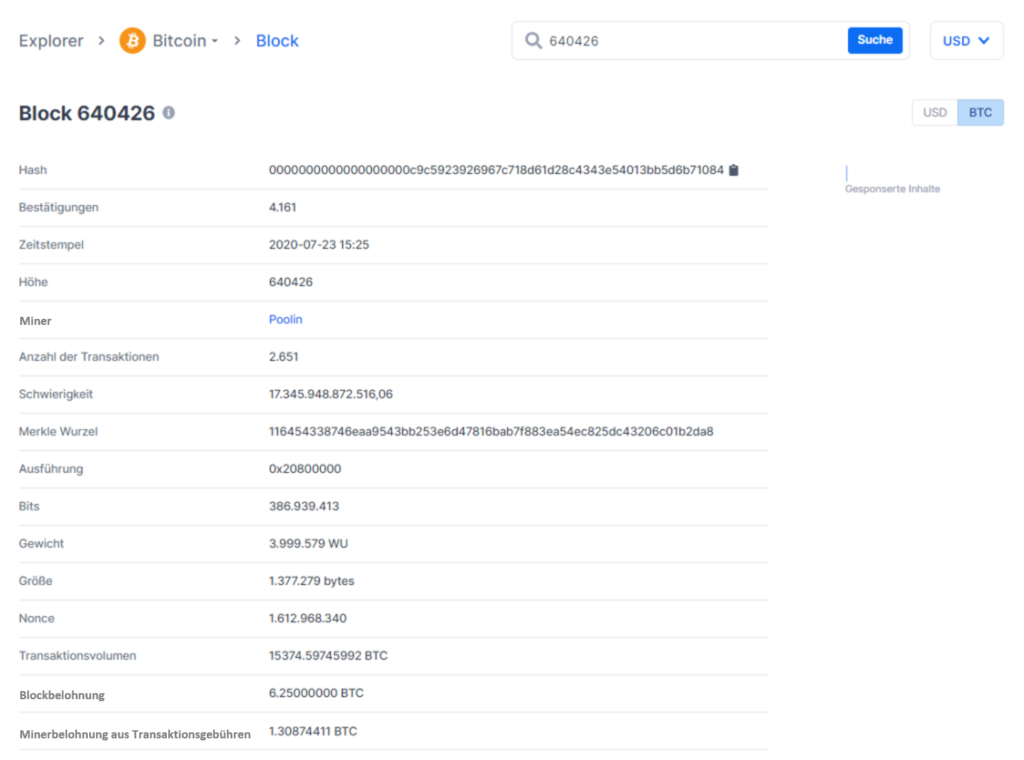
Source: https: //www.blockchain.com/btc/block/640426
The Explorer can give you a lot of information about the block. The following information about the block is displayed in an overview:
Hash: This information contains the hash of the current block. If you want to know what a hash is, you can read about it HERE.
Confirmations: Until the block has been accepted by all participants in the network, it is considered unconfirmed. If all participants in the network agree on this block, it is confirmed. All further blocks that build on this block will each result in an additional confirmation, as the blockchain network must also (co-)confirm our block each time due to the chaining. In our example, we have 4161 confirmations, i.e. 4160 blocks that build on our block.
Timestamp: This is the time at which a block was successfully mined . This is part of the block hash and is used to make attempts to manipulate the blockchain more difficult. For a timestamp to be valid, it must be greater than the average timestamp of the previous 11 blocks and less than the "network time" (= median of all timestamps of the full nodes in the network). The timestamp is also specified in the blockchain in UNIX time. This calculation of the time reflects the number of seconds that have passed since January 1, 1970. Leap seconds are ignored.
The time "2020-07-23 15:25" would therefore be 1595517900 UTC.
Height: This refers to the block height, which corresponds to the numbering of the block in the blockchain.
Miner: The miner who finds this block is recorded in the network. In this case, it was the mining pool "Poolin". If you want to learn more about mining, you can do so in the following block trainer 1×1: "What is mining?".
Number of transactions: Includes all transactions of the block.
Difficulty: This value corresponds to the difficulty of the current block. It gives you a comparative value with which you can assess the difficulty of subsequent or previous blocks. You can find out more about "difficulty" HERE.
Merkle root (Merkle tree): All transaction hashes are hashed in pairs to form a total hash.
Execution (version): The protocol version tells the network according to which rules the miner has worked.
Bits: This value describes thedifficulty target of a block. The lower this "bits" value, the more difficult it is to find a new block. With other block explorers, this value is often also specified as a hexadecimal number.
Weight: A value used to weight transactions so that the total number of all transactions does not exceed the block size limit of the block. A maximum of 1 MB of transactions can fit into a block.
Size: Indicates the total size of the block.
Nonce: The nonce plays a particularly important role in the mining process. As this process is quite complex, you can visualize it as a puzzle. A miner assembles a picture from puzzle pieces. The nonce is the last missing piece of the puzzle to complete the picture. However, the miner still has a huge pile of different puzzle pieces (nonces) to choose from. He must now find the right piece for him from this variety of different puzzle pieces. You can find out more about nonces HERE.
Transaction volume: The total amount of bitcoins sent via this block.
Block reward: The reward that the miner receives for solving this block. Also referred to as "block subsidy".
Miner reward from transaction fees: Any transaction fees incurred for sending transactions. This is an additional payment for the miner.
At the bottom of the browser you will also find a historical history of all transactions that this block contains.
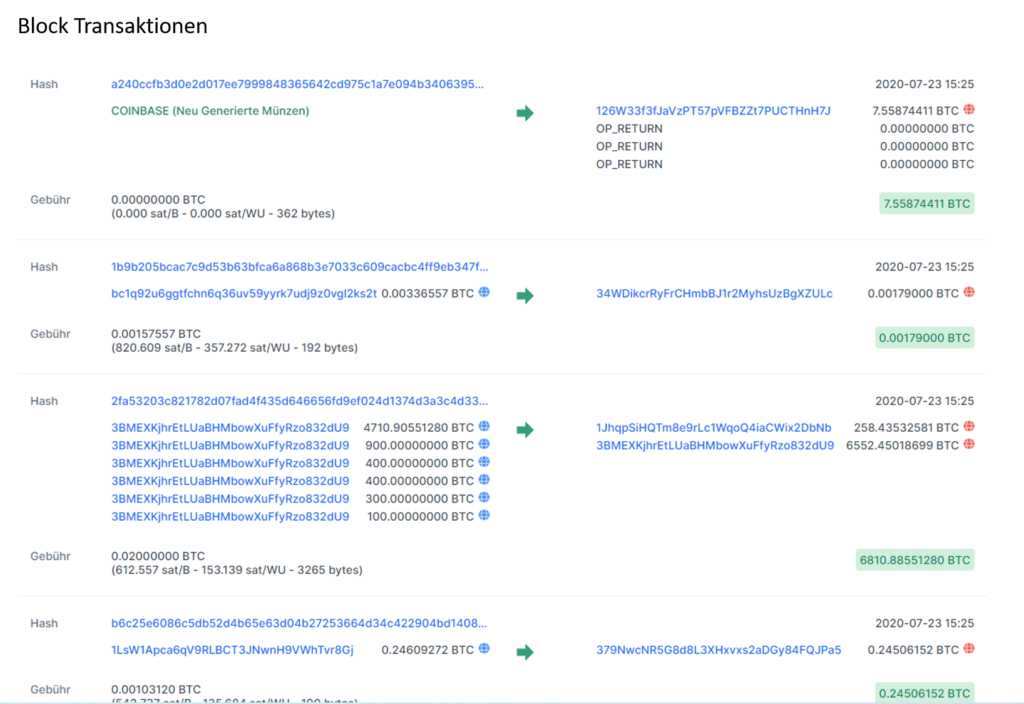
Source: https: //www.blockchain.com/btc/block/640426
Each blockchain address can also be displayed via the explorer. The number of transactions, bitcoins received, bitcoins sent and the current balance amount can be viewed publicly. In addition, the historical history of all transactions sent and received via the address is displayed.
